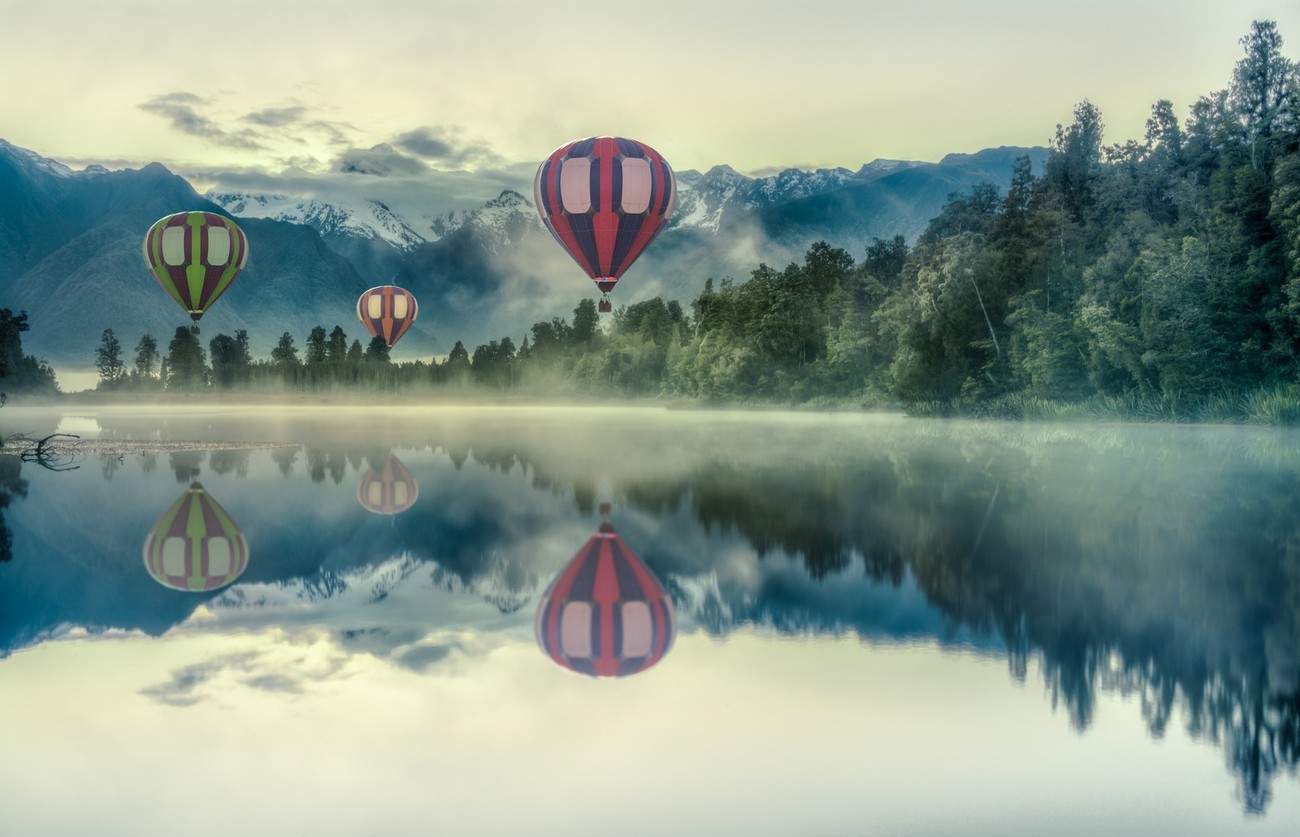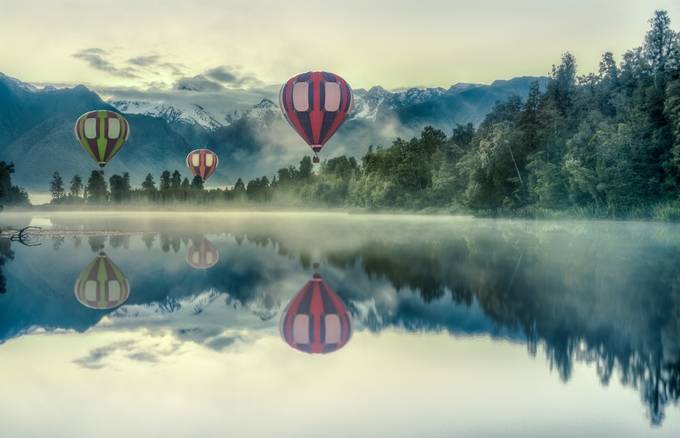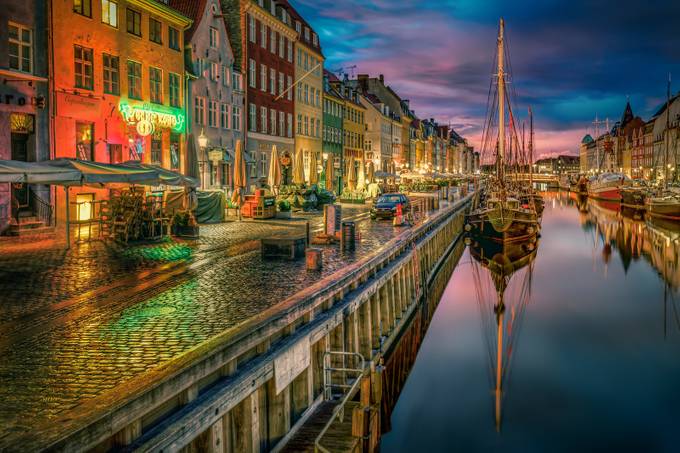It’s the streets we walk, the buildings we see, the escalators we ride - it is all there right in front of us. Day by day, we pass these things and still, we miss them. Jacob Surland (JacobSurland) from Denmark makes sure to shed some light on these places by taking beautiful pictures of the everyday objects we easily ignore and turn the HDR up a notch. We at ViewBug wanted to know what inspires Surland and what his three best photography tips are. Enjoy!
What inspired you to be a photographer?
Essentially it was my dad who laid the seed for my interest in photography. He took me to the darkroom as a child, and I watched the photos appear in fluids in the red light, just like magic. But, that was not what really started it. It was just the foundation.
The two things that made me become a serious photographer came much later in my life. I have a rushing river of creativity inside me, and at a point in my life I figured this out. I realized that I had to direct it somewhere, and since photography always had been a sleeping interest, and I simply began scratching the surface of that interest.
That brings me to the second thing. I bought a book, 'The Landscape Workshops' by Ross Hoddinott, a British landscape photographer, and an excellent writer. Ross' photos are amazing, and I fell in love with them instantly. What I learned from the book, was that all great photos are post-processed, and that it takes a lot more than just pointing the camera, and that realization connected with my desire to be creative. The idea of post-processing photos turned me on, and three months later I had bought my first serious camera.
What was your first camera and what do you shoot with today?
My first camera I bought in Barcelona while on vacation. I was 19, which means it was 25 years ago. It was a snapshot camera. I had wanted one with a zoom, but couldn't afford it, and I could not afford one of the big named brands either, so I got a no named brand. And to be honest, it was a lousy camera, and I regretted buying it.
Over the course of time, I have bought several cameras, but my first serious camera was the Canon 5D Mark III. Today I shoot with Nikon D800 and Sony A7R. I shoot using both the Nikon and the Sony. I have a Manfrotto Super Clamp 035 attached to my tripod, which allows me to have two ball heads on one tripod, and I shoot with two different lenses, at the same time.
When someone looks at your photos, what do you want them to take away from it, what are you trying to communicate?
I want my photos to bring the viewer on a journey of awe and curiosity. I take my viewers on a ride on the ridge between the valley of reality and the valley of surreality. Most of my photos strike a positive, warm and happy note, but there are some that are more dramatic. If a viewer ends up with a feeling of 'wauv' and wonders how this photo was made, I feel that my mission has been completed.
What is it that you love about photography?
What I love about photography, is that it's a universal language, that everybody can understand and can appreciate, across different cultures and different age groups. I also love that it's slightly out of control. I can't control the weather or even how people, cars, or how other things move.
What has photography done for you?
When I unleashed my sleeping passion for photography, I become much more whole as a person, because I have somewhere to direct my creativity. What has dawned on me, is that I have always been a 'sleeping artist', and now I am a fully awake artist.
I can also use photography as the platform to do something else, that I love. I love to teach others and share my knowledge. I have always been good, at decomposing complex things, into smaller easier understandable chunks, and this skill I use when I write tutorials on my blog www.caughtinpixels.com.
Do you try to be conceptual or do you prefer to show the feeling behind a photo?
I mostly want people to feel something when they see my photos, but I also have conceptual elements. A thing that I love to do is to add things that are not there. It might be fake light sources, shadows, or composite elements. But I do it in a subtle way. The sub-consciousness might notice it, but the conscious part of the brain will not. And yet, the brain is kept active.
When I make photos, and I by making, I mean post-processing, I push my photos away from reality, quite deliberately. And I push them as close as I can to an invisible border, that only I can see and feel. It's an emotional border and direction, and I use my gut feeling (seriously!), to find this line. When a photo touches myself, I am happy.
How do you describe your style?
My photos are rich and often colorful, cityscapes and landscapes, full of details the viewer can investigate. I rarely have people in my photos. I don't particularly like people in my photos, and leaving them without people adds to the surreal dimension. How often to you see Piccadilly Square empty?
I usually make use High Dynamic Range (HDR) as a technique when I make my photos. A common mistake is to call HDR a style. It's not a style; it's simply a technique. It would be like saying that an oil painting is a style because it is an oil painting. HDR gives a lot of data to work with, and it allows me to tweak and push my photos much more, than if it had only been single exposures.
If you had to choose one lens which one would it be and why?
Nikon 14-24 f/2.8 any day of the week. It's so incredibly wide and so incredibly sharp.
What are your 3 tips for others who want to become better photographers?
1) Learn post-processing and learn it fast. It's one of the most important factors. Do not rely on 'press a button' processing. In these Instagram and Snapseed days, everyone can do that. Don't be everyone else. Be yourself!
2) Learn to listen to that little voice saying 'ahh is that composition or post-processing good enough?' Usually, that little voice is right, it's you sub-conscience, and it is much more powerful than the rest of your brain. Learn to listen to it, and act on it, to improve your photography. You learn from making mistakes, but only if you notice you make them!
3) Learn to criticize your work. Ask others, what they think, and see if you see if they say the same as you think. Not everyone agrees, but some things are just 'wrong.' And when you have something, that is not good enough, and if you have the option, go back and reshoot, and that way you will learn from your mistakes.
Have you received negative feedback from your work? What did you do about it?
Not a lot. Only a couple of times, from Puritans who believe photos should reflect reality as exact as possible. But that's not my mission, and I tried to explain, what I did.
Where did you learn to take photos?
I am self-taught. I have never taken any course in photography, but I have read some books and seen some video tutorials and attended a photo workshop. I have focused my self-training on post-processing, rather than the actual shooting. My primary source for learning how to shoot photos is the book I mentioned by Ross Hoddinott.
Raw vs jpg and why?
Raw any day of the week. A RAW file contains so much more information. I push my photos, and to be able to push my photos away from reality, I need data, and a RAW file contains a lot more data than a JPG. I even shoot HDR photos to boost the amount of information. The more data I have, the more flexible the photo is and the more can I push it.
What do you carry in your camera bag?
I have a lot of stuff in my camera bag! I have F-stop backpack and these things I usually carry:
* Nikon D800 with 14-24mm f/2.8 OR 16-35mm f/4 VR. I use the 16-35mm if I plan on shooting using filters.
* Sony A7R with Sony Zeiss 24-70 f/4.
* Nikon 16mm fisheye with a metabones adapter. I use it on the Sony A7R.
* Manfrotto Super Clamp 035 attached with an extra ball head. I attach it to my tripod and shoot with both cameras.
* Cotton cloth to wipe of rain
* Fiber cloth to clean the lens.
* Plastic bags - I still haven't bought a 'rain coat' for my cameras.
* Headlight. I shoot a lot when it is dark, and a headlight is nice to have to find my way around the camera.
* Black rapid sniper strap.
* Spare batteries
* Spare memory cards. 64Gb the fastest I can get.
* USB Card Reader
* Rechargers
* Lens skirt. To shoot out of windows, with a minimum of reflections.
Optional things are:
* Occasionally my 70-200mm f/2.8 and a 2x converter finds it way into the back as well, but I rarely use this lens.
* Nikon 50mm f/1.4 lens
* Sony A6000 with 10-18mm. I have it when I travel light, or want to use less 'pro looking equipment' to trick tripod police, etc.
* Lee filter holder
* Lee big stopper, 2 stop filter, soft gradient set of filters.
* Dell 13" XPS Laptop for post-processing photos
If you could have the gift of a great photographer who would it be and why?
I would love to have the gift of Ross Hoddinott because of his skills as a Landscape photographer and I like how he post-processes his photos.
What is the most common mistake you see people making when shooting these days?
The most common mistake I come across is bad framing. Chopping something off, that should not be chopped off. Often it could have been solved, by moving a little bit or timing the shot.
What is your dream location to shoot?
I would love to shoot more photos on Iceland. I have been there, but with very bad weather and not on a photo trip. I did not by any means cover Iceland and would love to do that.
How do you decide on where to shoot a photo?
Most of my photo locations gets dictated by other factors in my life, like business trips, and exhibitions or vacations. If we, for instance, drive on a vacation, I make a point of stopping for the night, somewhere with photo opportunities. It's not always possible, but I try. And the locations I pick, usually has beautiful and famous places and buildings.
What is next for you? Any planned adventures with your camera?
The next thing I am doing is going to Chester Arts Fair to exhibit two photos. Chester looks like a fantastic place to shoot photos. On the way, I stay overnight in Hamburg, to shoot in Speicherstadt. There is a very famous location I would love to reshoot. I already shot it once, but I am not 100% satisfied with the result, and I now I have the chance to go back.
What is your goal with your photography?
My goal is, first of all, to satisfy my hunger for creating something beautiful, to create art, and second that people buy it and hang it, as art.
For more photography by Surland, visit his profile and website.

















